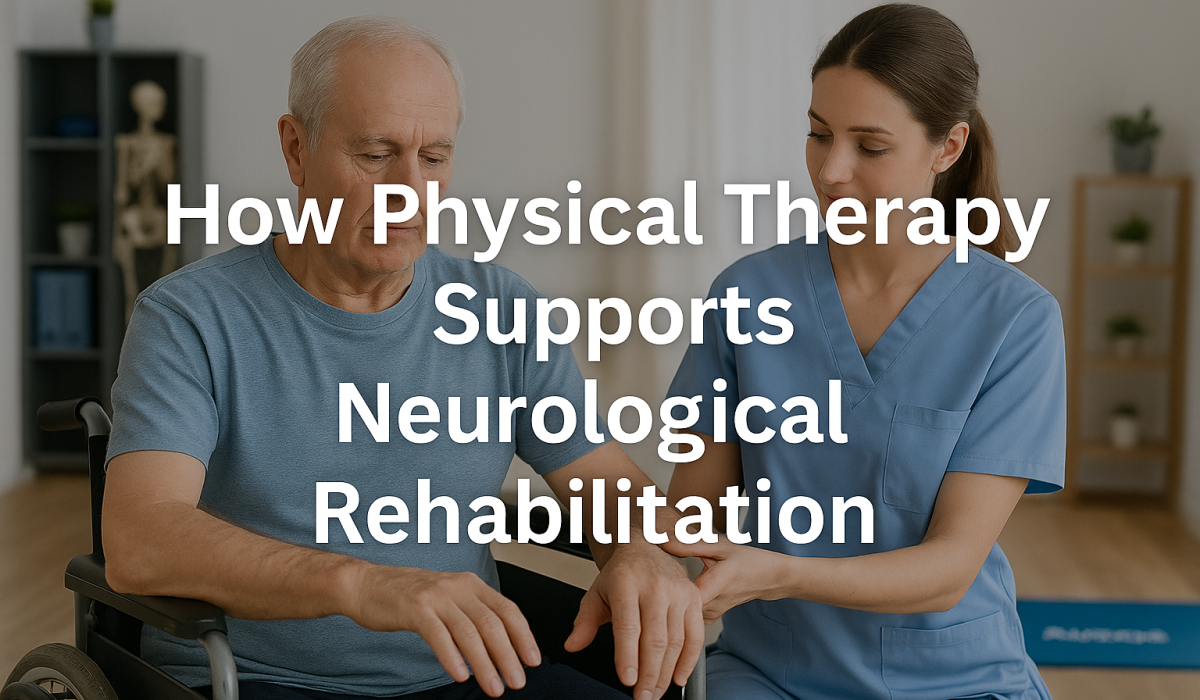When someone faces a neurological condition, the journey to recovery can feel overwhelming. Whether it’s the aftermath of a stroke, the progression of Parkinson’s disease, or other neurological challenges, the path forward often seems uncertain. However, neurological physical therapy has emerged as a cornerstone of rehabilitation, offering hope and tangible improvements for patients and their families.
At Capstone Physical Therapy & Fitness, we’ve witnessed countless individuals reclaim their independence and quality of life through specialized neurological rehabilitation programs. Our approach goes beyond traditional therapy methods, incorporating cutting-edge techniques and personalized treatment plans that address each patient’s unique needs and goals.
Understanding Neurological Conditions and Their Impact
Neurological conditions affect the brain, spinal cord, and nervous system, disrupting the complex communication network that controls movement, balance, coordination, and cognitive function. These disruptions can result from various causes including stroke, traumatic brain injury, Parkinson’s disease, multiple sclerosis, spinal cord injuries, and other degenerative conditions.
The impact extends far beyond physical limitations. Patients often experience changes in their ability to perform daily activities, maintain relationships, and participate in work or recreational pursuits. This is where neurological physical therapy becomes crucial—it’s not just about restoring physical function, but about rebuilding confidence and reconnecting with life’s meaningful activities. Many patients initially ask, “what is neuro PT?”, and it’s essentially specialized physical therapy focused on improving movement, balance, and coordination in individuals with neurological disorders.
Each neurological condition presents unique challenges. Some patients may struggle with muscle weakness on one side of their body, while others might face balance issues, tremors, or difficulty coordinating complex movements. Neurological physical therapy focuses on understanding these individual patterns and tailoring treatment strategies to improve function, independence, and overall quality of life.
The Science Behind Stroke Recovery
Stroke recovery represents one of the most dramatic examples of neurological physical therapy’s potential. When a stroke occurs, brain cells are damaged or destroyed, disrupting the neural pathways that control movement and function. However, the brain possesses remarkable plasticity – the ability to form new neural connections and adapt to injury.
Physical therapy capitalizes on this neuroplasticity through targeted exercises and activities that encourage the brain to develop alternative pathways. Stroke recovery often involves relearning basic movements that were once automatic, from reaching for a cup to walking across a room. Therapists use repetitive, task-specific training to help patients rebuild these motor patterns.
The timing of intervention is critical in stroke recovery. Research shows that intensive rehabilitation in the weeks and months following a stroke can significantly improve outcomes. Early mobilization helps prevent complications like muscle atrophy and joint stiffness while maximizing the brain’s natural healing processes.
Modern stroke rehabilitation incorporates technologies like robotic-assisted therapy, functional electrical stimulation, and virtual reality systems. These tools provide precise, consistent feedback that enhances traditional therapy approaches, allowing patients to practice movements in safe, controlled environments.
Specialized Approaches for Parkinson’s Therapy
Parkinson’s disease presents unique challenges that require specialized therapeutic approaches. Unlike stroke, which typically involves sudden onset of symptoms, Parkinson’s is a progressive condition characterized by tremors, rigidity, bradykinesia (slowness of movement), and postural instability.
Parkinson’s therapy focuses on maintaining and improving mobility while adapting to the condition’s progressive nature. Large amplitude movements, such as those emphasized in LSVT BIG therapy, help counteract the tendency toward smaller, more restricted movements that characterize the disease. Cueing strategies, including visual, auditory, and tactile prompts, help patients initiate and maintain movement patterns.
Balance training becomes particularly important for Parkinson’s patients, as falls are a significant concern. Therapists work on dual-task training, helping patients maintain stability while performing cognitive tasks – a skill that’s often compromised in Parkinson’s disease. Gait training focuses on improving stride length, rhythm, and turning strategies.
Exercise intensity matters significantly in Parkinson’s therapy. Research suggests that high-intensity exercise may have neuroprotective effects, potentially slowing disease progression. Programs often include cardiovascular training, strength exercises, and activities that challenge coordination and balance.
Comprehensive Movement Rehabilitation Strategies
Effective movement rehabilitation requires a multifaceted approach that addresses not just the primary neurological symptoms, but also secondary complications and functional goals. This comprehensive strategy typically includes several key components working together to optimize outcomes.
Motor learning principles guide the design of rehabilitation programs. Therapists break complex movements into manageable components, provide appropriate challenges, and create opportunities for skill transfer to real-world situations. Practice variability helps ensure that improvements generalize beyond the therapy setting.
Strength training plays a crucial role, as many neurological conditions result in muscle weakness. However, the approach differs from traditional strength training, focusing on functional movements and motor control rather than pure power development. Resistance exercises are carefully designed to improve strength without exacerbating spasticity or abnormal movement patterns.
Balance and coordination training addresses the vestibular, visual, and proprioceptive systems that work together to maintain stability. Activities might include standing on unstable surfaces, tracking moving objects while maintaining balance, or navigating obstacle courses that challenge spatial awareness and motor planning.
The Role of Technology in Modern Neurological Rehabilitation
Technology has revolutionized neurological physical therapy, providing new tools and techniques that enhance traditional approaches. Robotic devices can provide precise, repetitive movement training while reducing the physical demands on therapists. These systems can adjust resistance and assistance levels in real-time, providing optimal challenges for each patient’s current abilities.
Virtual reality systems create immersive environments where patients can practice functional activities in safe, controlled settings. A patient recovering from stroke might practice crossing a virtual street, while someone with Parkinson’s disease could work on navigating crowded spaces. These technologies provide immediate feedback and can make therapy more engaging and motivating.
Biofeedback systems help patients understand and control their movements more effectively. Surface electromyography (EMG) can show muscle activation patterns, helping patients learn to activate specific muscles or reduce unwanted tension. Force plates provide detailed information about weight distribution and balance strategies.
Wearable devices and mobile applications extend therapy beyond the clinic walls. Patients can track their daily activity levels, practice prescribed exercises, and receive reminders for medication or therapy sessions. These tools help maintain engagement and provide valuable data for treatment planning.
Building Functional Independence
The ultimate goal of neurological physical therapy extends far beyond improving test scores or meeting clinical benchmarks. Success is measured by a patient’s ability to participate in meaningful activities and maintain independence in their daily lives. This requires a shift from focusing solely on impairments to addressing activity limitations and participation restrictions.
Functional training emphasizes real-world activities that patients need to perform. Rather than just practicing isolated movements, therapy sessions might include cooking tasks, grocery shopping simulations, or workplace activities. This approach helps ensure that improvements in the clinic translate to improvements at home and in the community.
Environmental modifications and adaptive equipment play important roles in maximizing independence. Therapists work with patients and families to identify home safety issues, recommend assistive devices, and teach energy conservation techniques. Sometimes small changes in the environment can make enormous differences in a person’s ability to function independently.
The Importance of Family and Caregiver Involvement
Neurological rehabilitation is most successful when it extends beyond the patient to include family members and caregivers. These individuals often play crucial roles in supporting recovery and maintaining gains achieved in therapy. Education and training for caregivers can significantly impact outcomes and reduce the burden of care.
Family members learn to recognize signs of improvement or decline, understand the importance of consistent exercise and activity, and develop skills to assist with transfers, walking, and other daily activities safely. They also learn to provide appropriate challenges and encouragement while avoiding overprotection that might limit recovery.
Support groups and peer networks provide valuable emotional support and practical advice. Connecting with others who have faced similar challenges can reduce feelings of isolation and provide hope during difficult periods of recovery. Many patients find motivation and inspiration from hearing success stories from others in similar situations.
Looking Forward: The Future of Neurological Rehabilitation
Research in neurological rehabilitation continues to evolve, bringing new hope and possibilities for patients facing these challenging conditions. Advances in neuroscience are providing deeper understanding of how the brain adapts and recovers from injury, leading to more targeted and effective interventions.
Regenerative medicine approaches, including stem cell therapy and growth factor treatments, may eventually complement traditional rehabilitation methods. Brain stimulation techniques like transcranial magnetic stimulation show promise for enhancing neuroplasticity and accelerating recovery.
Personalized medicine approaches are becoming more sophisticated, with genetic testing and biomarkers helping to predict which patients might respond best to specific interventions. This precision approach could lead to more efficient and effective treatment plans tailored to individual patients’ characteristics and needs.
Your Journey to Recovery Starts Here
At Capstone Physical Therapy & Fitness, we understand that every neurological condition is unique, and every patient’s journey is different. Our specialized team of neurological rehabilitation experts works closely with each individual to develop comprehensive treatment plans that address their specific needs, goals, and challenges.
Whether you’re beginning your recovery journey after a stroke, managing the progression of Parkinson’s disease, or facing other neurological challenges, we’re here to support you every step of the way. Our state-of-the-art facility, evidence-based treatments, and compassionate care team provide the foundation for meaningful recovery and improved quality of life.
Don’t let a neurological condition define your limits. Contact Capstone Physical Therapy & Fitness today to learn how our specialized neurological rehabilitation programs can help you reclaim your independence and rediscover your potential. Your journey to recovery begins with that first step – let us help you take it.




